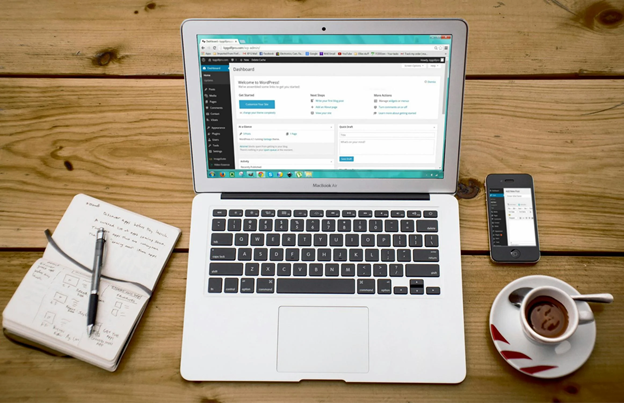Managing several WordPress domains is like juggling; it requires precision, timing, and skill. Whether for broadening market reach, supporting varied services, or protecting a brand name, the choice to operate multiple domains is common in digital strategy.
The first step in this multi-faceted challenge is always a domain name search. This ensures not just the availability of your desired names but also their fit with your brand’s vision. Embarking on this task without checking domain availability is like setting sail without a map. By confirming your domains early on, you lay a solid foundation for the complex task of managing them effectively, setting the stage for the numerous hurdles discussed here.

Understanding Domain Configuration Complexity
Configuring multiple domains involves a detailed setup of DNS settings, A records, and CNAME records. Each domain must correctly point to its intended destination without interfering with others. Misconfigurations can lead to significant downtime and accessibility issues, making it essential for administrators to apply meticulous attention to detail.
The configuration process requires a deep understanding of how domain names interact with your hosting environment and how they resolve across the internet. Mistakes here aren’t just headaches; they’re operational hazards that can sideline your digital presence. You must become a maestro of domain settings, orchestrating an error-free performance that keeps your online ensemble in tune.
Managing Hosting and Server Resources
Hosting multiple domains on a single WordPress installation significantly affects server resources. High traffic across your domains can strain your hosting capabilities, leading to slower site performance or even server crashes if not managed properly. You need to balance the load effectively and allocate resources in a way that ensures all your domains perform optimally.
This might involve upgrading your hosting plan or employing advanced caching strategies to handle increased loads. Often overlooked is the need for vigilant monitoring of server performance to preempt potential problems. It’s like keeping a finger on the pulse of your server—always checking, always ready to act.
SEO Challenges with Multiple Domains
Operating multiple domains introduces several SEO challenges, particularly concerning duplicate content and the division of domain authority. Search engines might penalize your sites if they detect substantial duplicate content, which can dilute your SEO efforts. To combat this, use canonical URLs to help search engines understand which site hosts the original content.
Additionally, proper redirects can channel users and search engines to the correct pages, thereby maintaining your site’s authority and relevance. Remember, search engines aren’t just algorithms; they’re gatekeepers to your audience, and playing by their rules is not optional. Strategic planning and meticulous implementation of SEO best practices will ensure you stay in their good graces.
Consistent Branding Across Domains
Maintaining a consistent brand and user experience across multiple domains can be as challenging as it is crucial. Each domain should reflect your brand’s ethos and maintain a uniform appearance to not confuse or alienate your audience. Implement a unified theme and design strategy across all domains.
This approach helps in reinforcing your brand’s identity and ensures a cohesive user experience, no matter how customers interact with your brand online. Divergence in design can fracture your brand’s strength, turning a potential powerhouse into a disjointed array of online presences. A focused, unified brand strategy acts like a director, ensuring every part of your online empire delivers the same message.
Security Implications
Because of its widespread use, WordPress experiences approximately 90,000 attacks every minute. Therefore, the more domains you manage, the greater the security risks you face. Each domain serves as a potential entry point for security threats, which can compromise your entire network.
It’s important to consistently update all your domains with the latest security enhancements from WordPress, including patches and plugins. Establish strong security practices such as SSL certificates, secure passwords, and comprehensive firewall configurations to protect your sites against threats. Don’t wait for a security incident to appreciate the need for safety. Being proactive is essential to defend against online threats effectively.
Legal and Compliance Issues
Managing multiple domains also involves navigating a complex landscape of legal and compliance issues. Each of your domains must comply with specific privacy and data regulations, which can vary greatly depending on the geographic area or business sector. It’s crucial to ensure that all your websites adhere to applicable laws, such as Europe’s General Data Protection Regulation or the California Consumer Privacy Act in the U.S.
Regularly checking your compliance through audits and consulting with legal professionals can keep you on the right side of the law and avoid costly legal troubles. Remember, the internet doesn’t forget slip-ups, and neither do regulatory bodies. Compliance is more than just legal adherence; it involves respecting the privacy and digital rights of your users.

Final Thoughts
Dealing with multiple WordPress domains involves various difficulties, from setting them up technically to meeting legal requirements. By grasping these hurdles and addressing them in advance, you can run your domains efficiently, helping them support your business goals.
Make sure you’re up to date with the newest WordPress enhancements and tools that can streamline the handling of several domains. Engage with the community and experts to share insights and strategies for successful multi-domain management. Your diligence and proactive management will pave the way for a robust online presence across all your domains.


















This is a really helpful post! Managing multiple domains in WordPress can definitely be tricky, especially when you’re trying to maintain consistent branding and functionality across sites. I appreciate the tips on using plugins like Domain Mapping and multisite setups—it’s such a powerful feature, but not always intuitive for beginners.